“Back in 1990, folks here were frustrated because although we were one of the poorest communities or micro-regions in Southeast Ohio, we hardly ever saw any dollars come down to our level to help out. So, we decided we needed our own organization to begin talking about the future instead of just being the poster child for poverty in southeastern Ohio, and we formed Sunday Creek Associates as an effort in Southern Perry County to look at pursuing our own community development.
One of the first things we did was start an oral history effort. Both my colleague Sandra Landis and I have past experience with bringing folks with disabilities home from state institutions during the deinstitutionalization movement. Understanding their history, and the history of wounded people, is important.
We knew the community’s somewhat buried history was important to the effort, but no one was paying attention to it, other than a couple of picture collectors. With that, we embarked on creating local history groups in four or five communities in Southern Perry County. As we looked at our history, we expanded our footprint to cover the natural region of Sunday Creek and Monday Creek, two of the most polluted acid mine drainage streams in the state.

I had also started a community newsletter called Community Life News for Southern Perry County, so we had an outlet for a lot of the stories. Within three or four years, we decided that this micro-region of coal mining communities in Hocking Valley, which were previously the Hocking Valley coal fields, needed an identity and a positive brand.
In coal mine research done by Ivan Tribe, a history professor at the University of Rio Grande, he referred to the region as the ‘Little Cities of Black Diamonds’, so we renamed ourselves ‘Little Cities’.
We’re following an asset-based development model. That means, rather than focusing on our problems and challenges in these communities, we started with building on our assets. We discovered that two of our clearest assets in the Little Cities of Black Diamonds were our history and our natural environment as the area is in the Athens District of the Wayne National Forest.
We’ve got stories to share—and we’re not the only ones—about what can be done to create positive change.
john winnenberg
I grew up here in a little town called Corning, and it was nice to start to understand more about the place where I grew up and currently live. Growing up, I’d never seen anything but out-migration, decay, and decline my entire life, so along the way of uncovering this history, it was also a process of understanding all these grand days that people talked about and what they were really like.
We began with exhibits at the New Straitsville Moonshine Festival and we held panels with elders. People started opening up their drawers and their minds with artifacts to share. We’ve published a number of community local histories and started a Little Cities of Black Diamonds Day in 1995, which will be 27 years old this October.
We’ve helped to make Little Cities of Black Diamonds kind of a household name for this series of remnant coal mining towns. Our stories are about labor unions and ethnicity, so we started bringing those stories to the forefront.
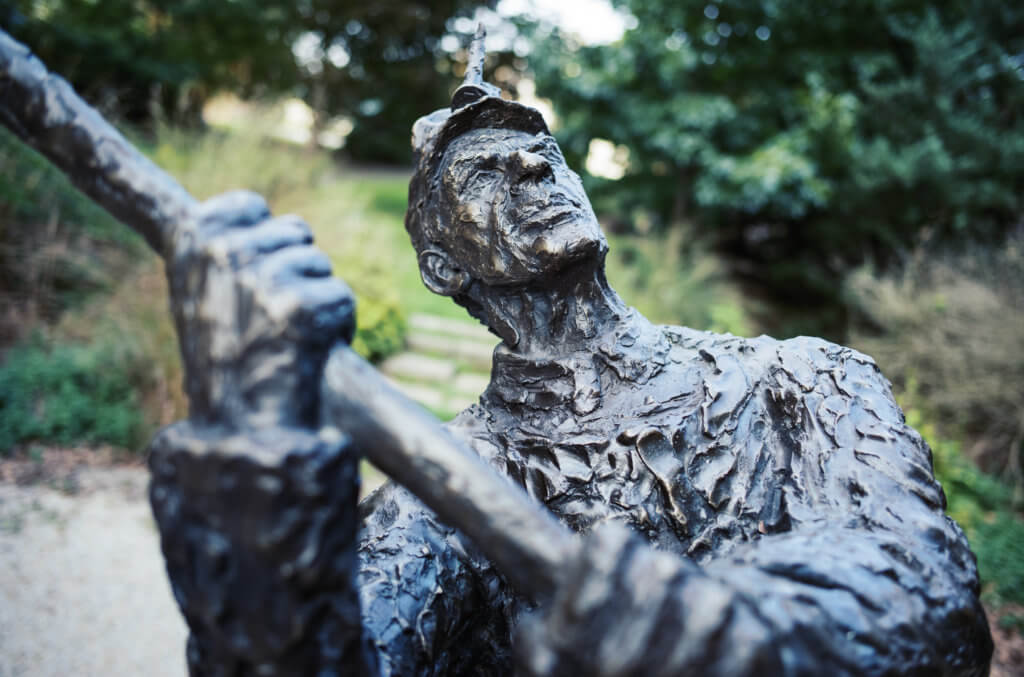
At the same time, some of the early watershed cleanup efforts got started. An organization that we’ve worked closely with is Rural Action and they started the Sunday Creek and Monday Creek Watershed Restoration Project. One of our biggest eyesores, beyond dilapidated buildings and vacated Main Streets, were the polluted orange streams from acid mine drainage. They took up a community organizing model as well and located their headquarters in these little mining towns.
That was a lot of change, and along the way, we’ve learned about community organizing and about creating new commerce.
My feeling as I grow older is that there is a rural crisis in this country. We’ve got stories to share—and we’re not the only ones—about what can be done to create positive change. But for it to work, it needs to be embraced by many more organizations, groups, and people.”
“I came home from college for a visit in 1976. My girlfriend at the time, who I thought I was moving to Richmond, Virginia with, dumped me. At the same time, they were going to tear down the theatre in Shawnee.
My friends put out this alert to a few of us that we needed to do something to save the theatre. We talked the owner of the building into selling us the building, the tallest building in Perry County other than the Courthouse Clock Tower, for $500.
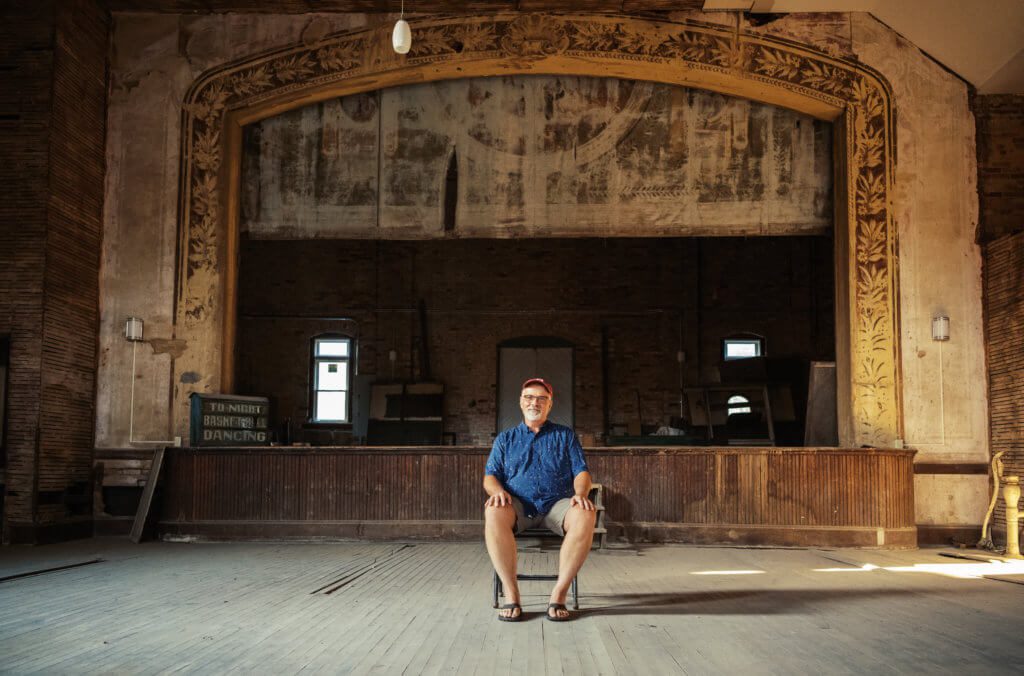
There was water pouring throughout all four stories. You could be on the bottom floor and there would be water pouring from the roof all the way down through the entire building. It was full of pigeons and everything that comes with pigeons and the windows were all broken.
Despite being seen as hippie kids and a lot of the local people in town being very suspicious of what we were up to, we got some help from the local bank on account of our family names.
We were doing a lot of nickel and diming to try to make something happen.
john winnenberg
We were able to put a new roof on the building. We found a disabled roofer and put him in a box and pulled him up on the top of the roof every day because he couldn’t walk up the steps. He told us how many boards to order. Back then, rubber roofs weren’t a thing, so we did it all with hot tar and rolls of tar paper. We had to replace the entire wood structure of the roof too, so I got over my fear of heights pretty quickly.
When we got all that done, I got a couple of grants to repair the windows. We spent summers with the neighborhood and youth programs cleaning all the debris out of the building. The local landfill allowed us to dump the debris without charging us anything, which was a real gift.
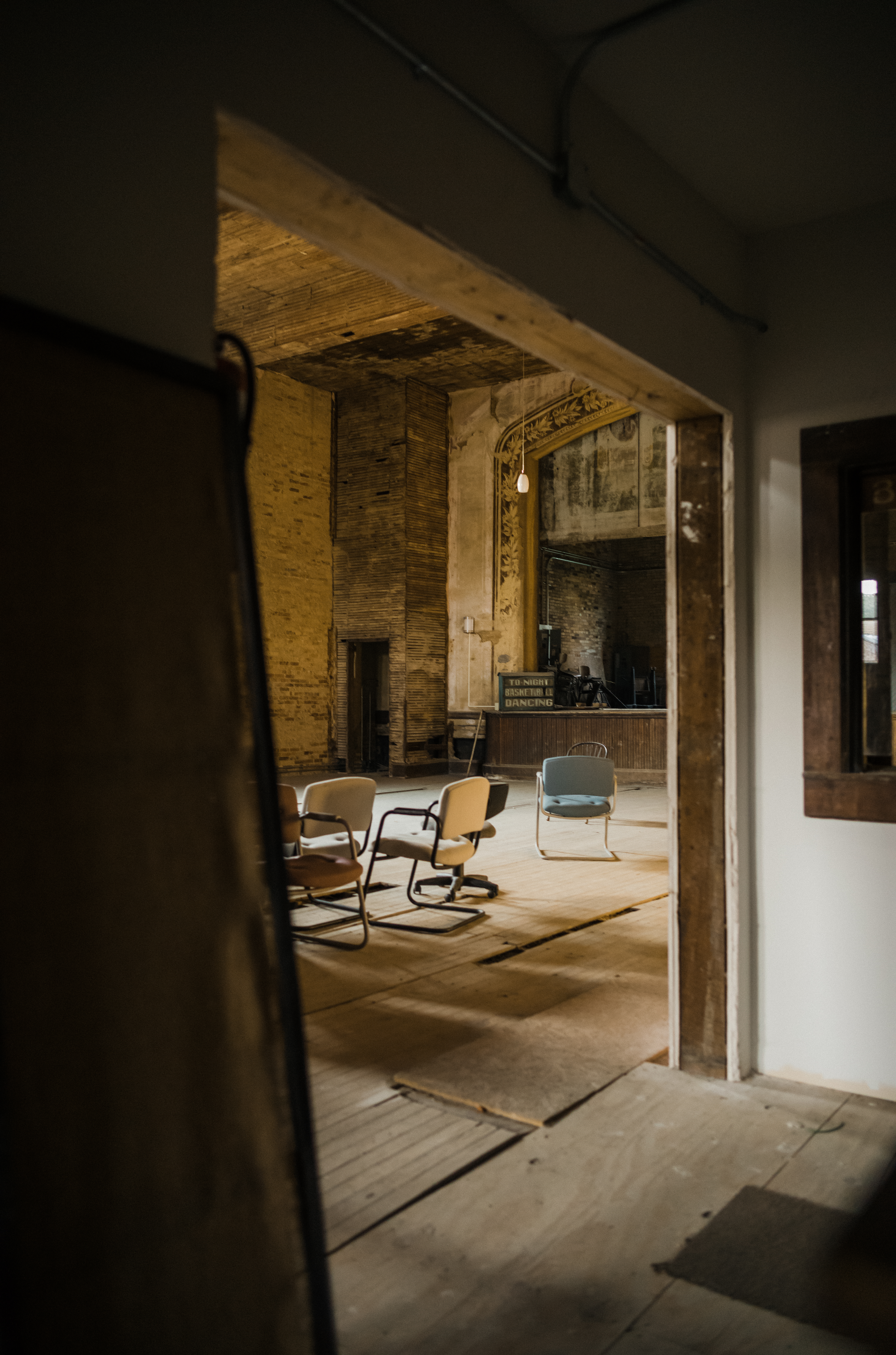
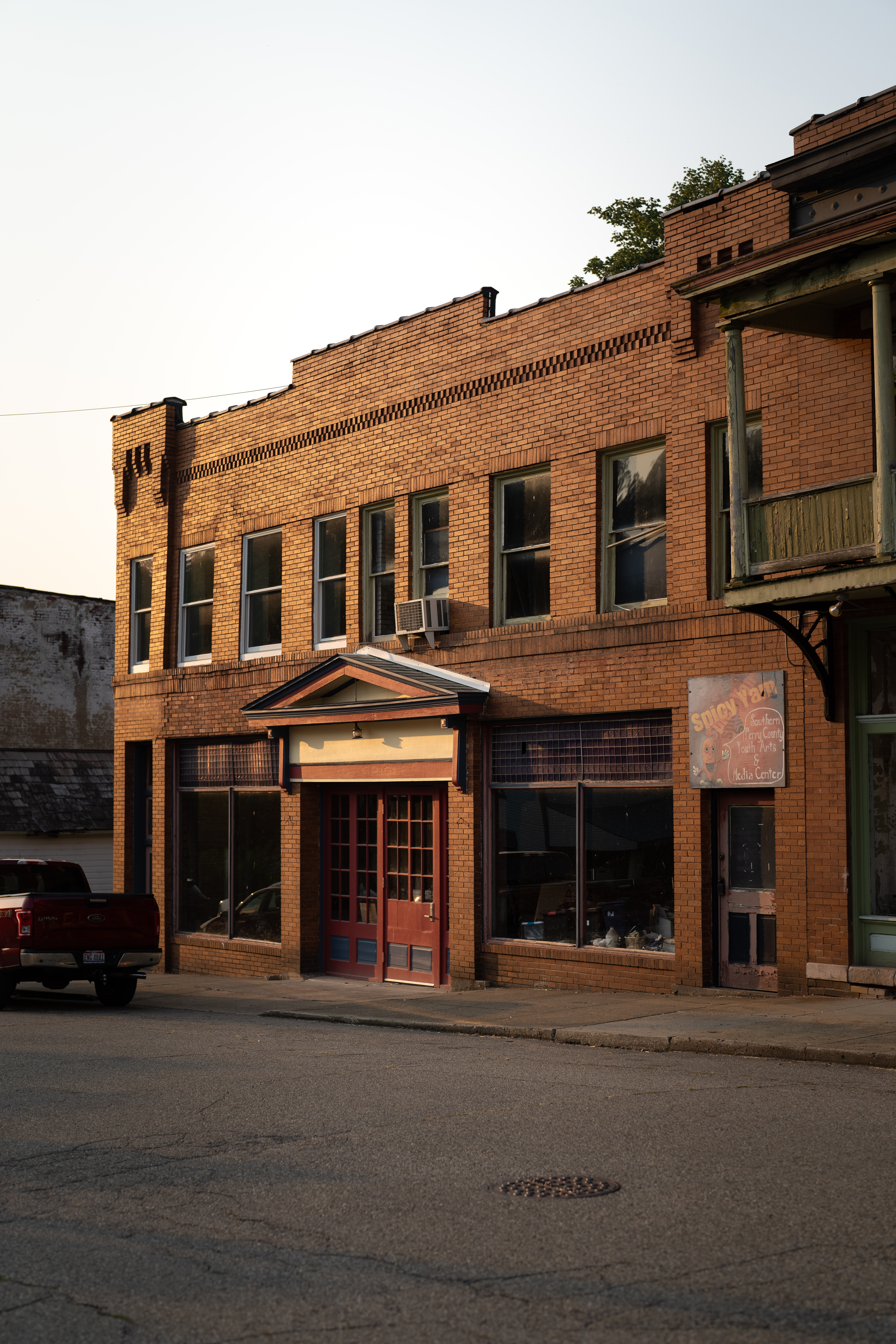
We got the building cleaned out, but we all had busy lives. I was still the director of an organization bringing people home from state institutions. From about the late 70s to the early 90s, we had a lot of fundraisers, like concerts in the parks and basketball tournaments, in order to pay our bills, but we didn’t have the time to go after the money we really needed.
Part of the purpose of Sunday Creek Associates was to try to access funds to get this building taken care of. That’s important, because the other part of our story, which became really clear when we were doing the local history, was that all the people who made money off the coal mines in these towns were long gone. As a matter of fact, they probably never were here in most cases—they were in New York City or other big cities.
The people who were left were just working-class people. There was no old money here except for a few people who would make small contributions. But there was definitely no large corporate or organizational kind of money, though. Perry County didn’t even have a foundation at the time, so we were doing a lot of nickel and diming to try to make something happen.”
“In the 90s, we started going after grants and piecing together funding. We’ve never gotten any huge grants. The biggest grant we got was about $400,000, which allowed us to get the whole building tuck pointed, the facade done, the left-hand side of the downstairs complete, and also an apartment in the back under the stage.
The entire first floor and the exterior of the building have been repaired now for the last 10 years. We also have a whole new stairwell through all three stories and we are just in the process of working on an Abandoned Mine Lands Grant for $4 million that will allow us to finish the building in the next couple of years.

We’re celebrating that, because it’s been approved by the Ohio Department of Natural Resources, and is on its way to Washington D.C. for approval. They rely predominantly on the states to pick the projects and this is the first time they’ve done a community project with this money. The money usually goes out in the woods on an Abandoned Mine Land project, so this is going to complement rebuilding the Buckeye Trail from Shawnee to Burr Oak State Park. That is a 15-mile foot trail with seven different bridges, so that’ll be part of the project, too.
…They also see we’re focused on the community as a whole–not just a building—and that we’re willing to stick with it.”
John winnenberg
Part of our development strategy, and a big decision early on, was whether or not to focus on just the theater or do we look at the bigger picture of the community, and the theater as a part of that.
We decided that addressing the bigger picture of the community was important, so our organization, Sunday Creek Associates, initiated summer recreation programs for kids, local history groups that were focused on telling the story, and building community pride.
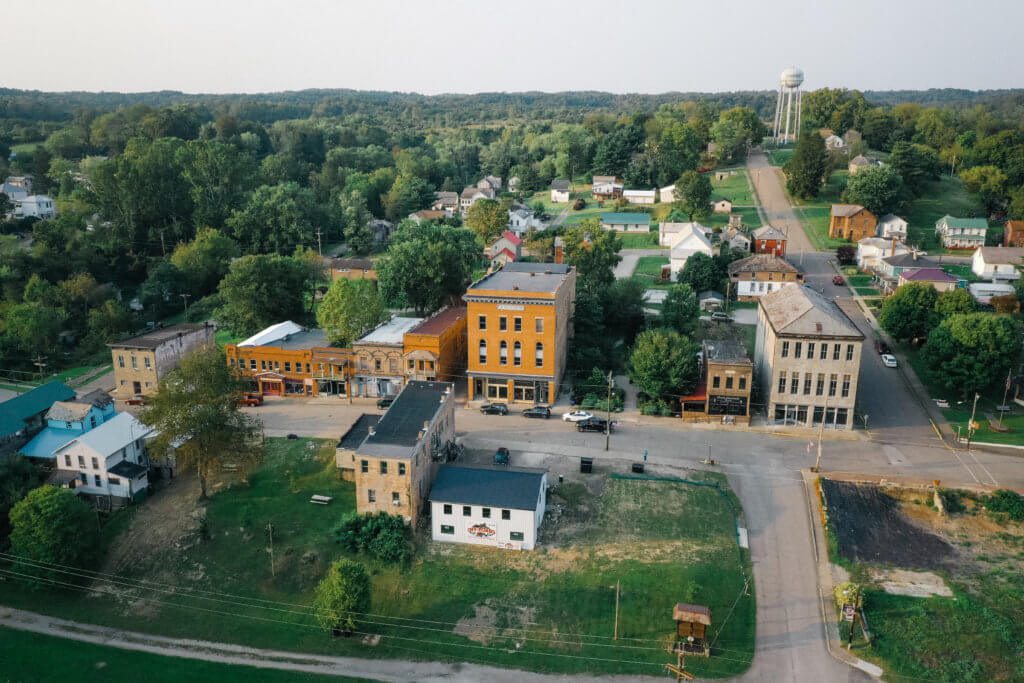
One could say, if we’d stayed focused on just the theater, maybe it would have been done a long time ago and it could have led to the change. But we chose this path that was more multifaceted and, until recently, I questioned whether it was the right thing to do.
Now I’m pretty convinced at this point in the journey that it was the right thing to do. It’s a turtle strategy versus a hare and that’s driven a lot of people crazy that we’re so slow…but they also see we’re focused on the community as a whole–not just a building—and that we’re willing to stick with it.”
“In 2008, we started working on the environmental piece with Rural Action. We had a lot of energy around that because they have a strong environmental mission for the region with the goal of creating a sustainable environment and economic ecosystems here.
We began to build more awareness for this natural asset of being surrounded by the Wayne National Forest. Part of the project was having high school kids build a trail to this wonderful lookout…which was usually filled with beer cans and was known as a good place for the wildlife officers to arrest people for smoking pot.
So, the kids built this new trail with an outlook, benches, and a kiosk. We started this initiative we called Little Cities of the Forest because the mining was long gone, but the outdoor assets we have were getting more attention.
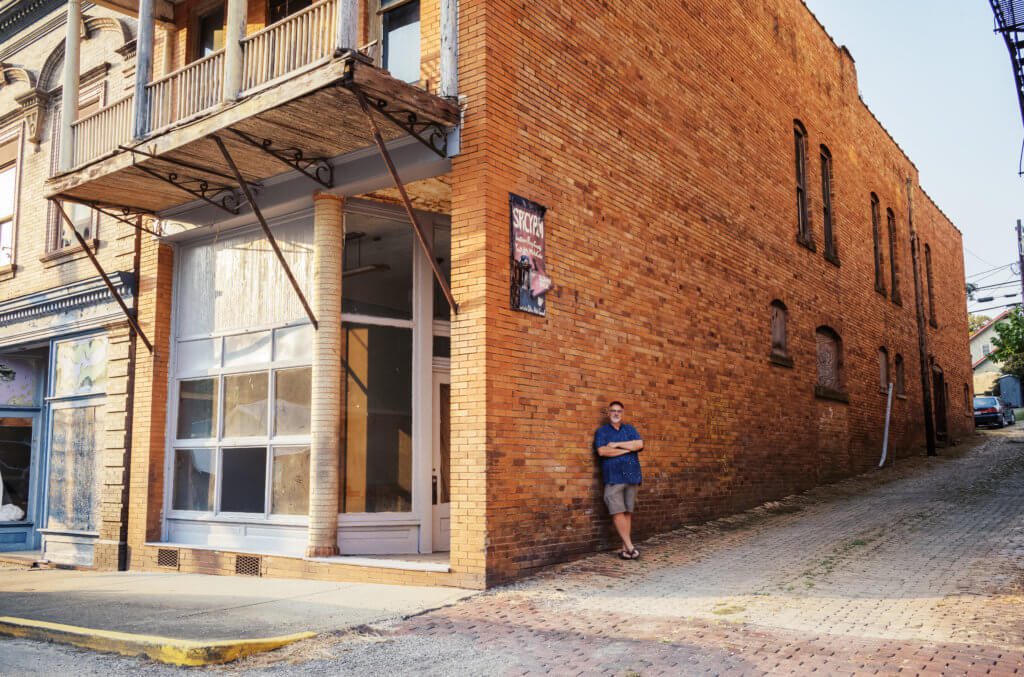
In doing that, I met Young America member Andrew Bashaw, who is now the director of the Buckeye Trail in Ohio. He finished his graduate degree at OU and fell in love with the Little Cities area. He had already moved there and was living in a cabin.
He became the first paid director of the Buckeye Trail, a 1,400-mile looped trail around the state that’s been worked on by volunteers since the 1950s. He located the Buckeye Trail headquarters in downtown Shawnee as part of the initiative. That also put another post in the ground, along with the watershed groups, that this area is starting to embrace its natural environment.
At one point long ago, they cut everything down and all the trees were gone because they needed the timber for the railroads. But the forest is incredibly resilient here, and as soon as you stop cutting, the forest comes back. Despite what it was, 100 years later, we’ve got this pretty rad landscape around us.
All the old remnant pine plantations that were planted by CCC workers back in the 30s are now dying off and the hardwood forest has pretty much taken full control. It’s a beautiful place and people are increasingly interested in it.
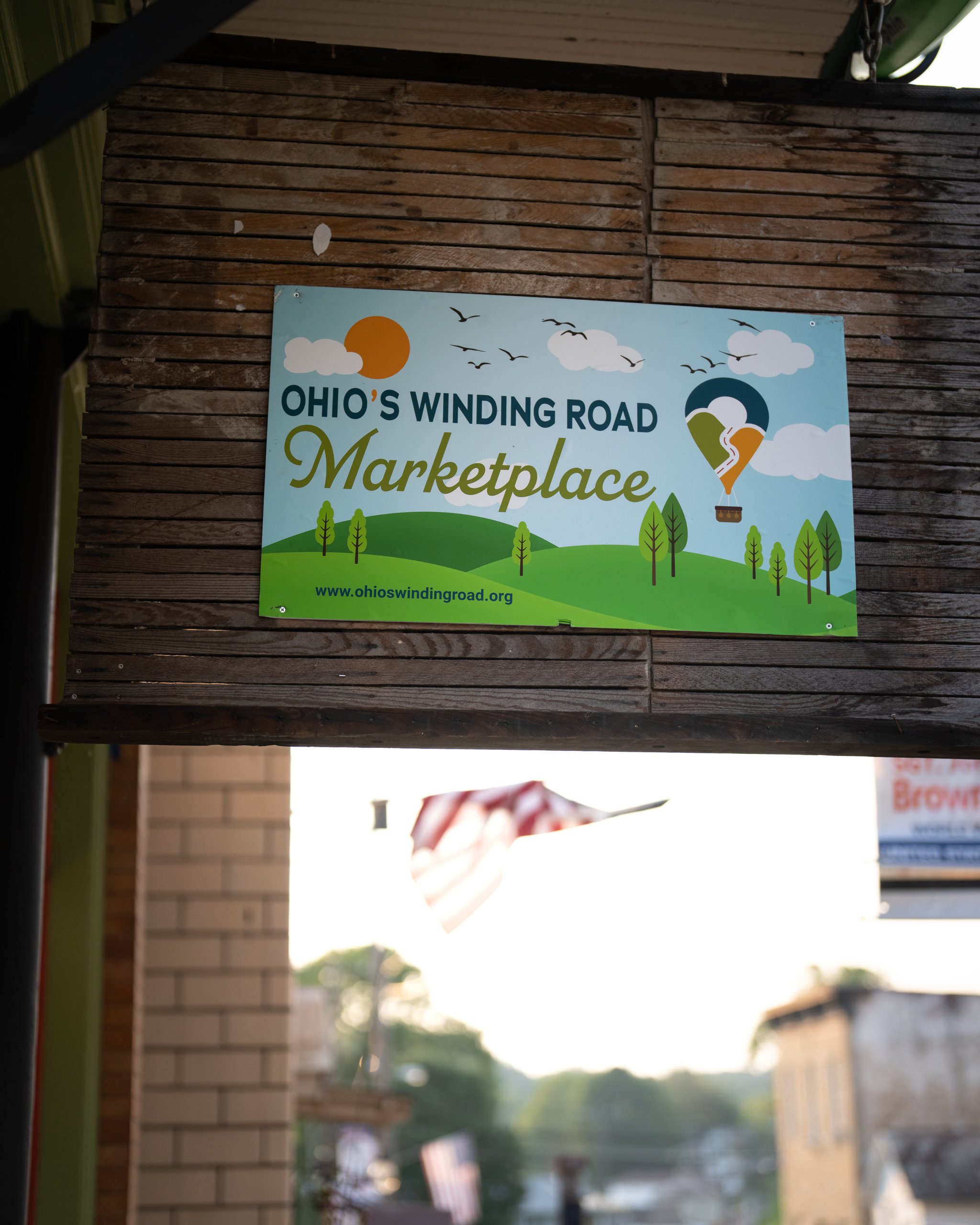
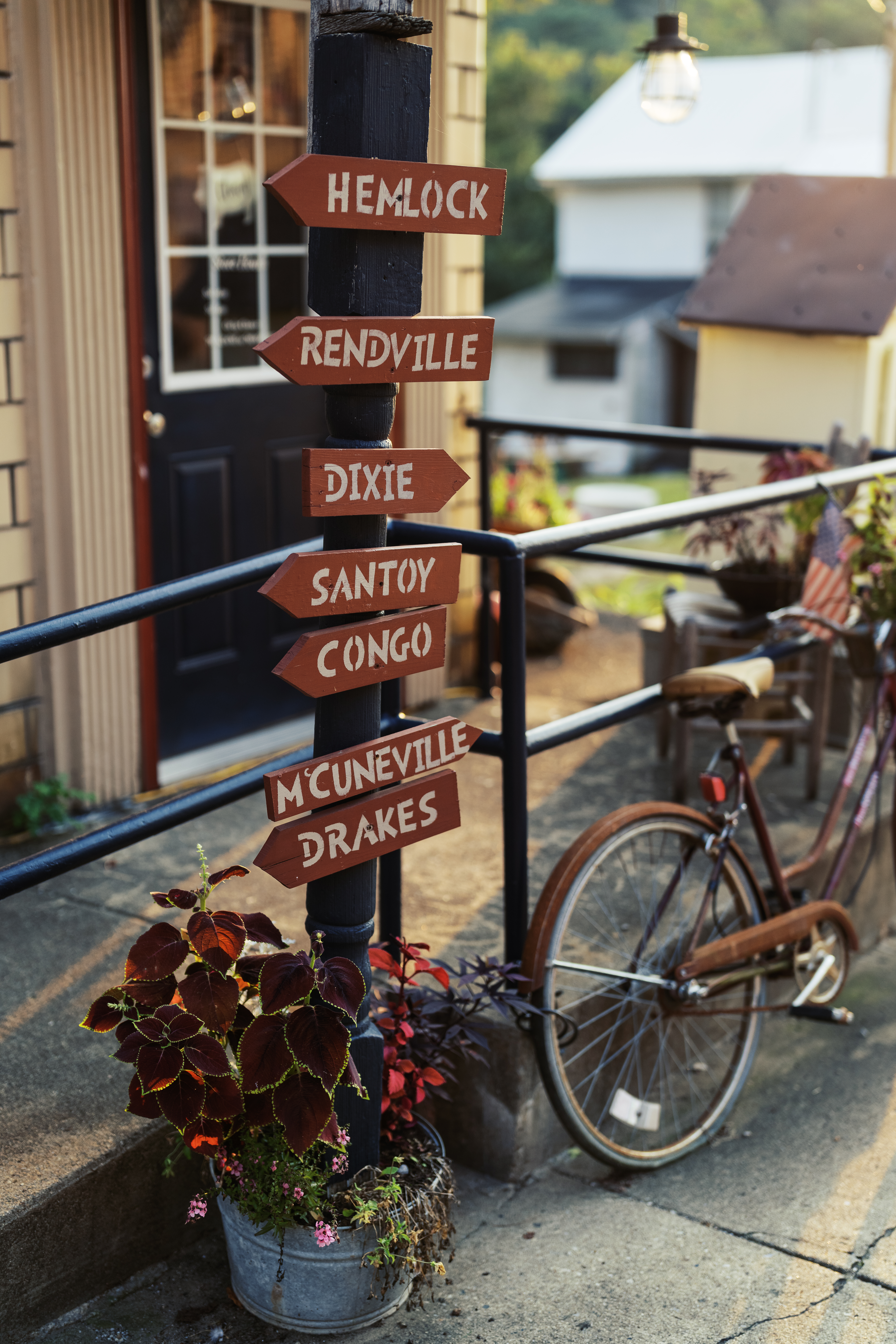
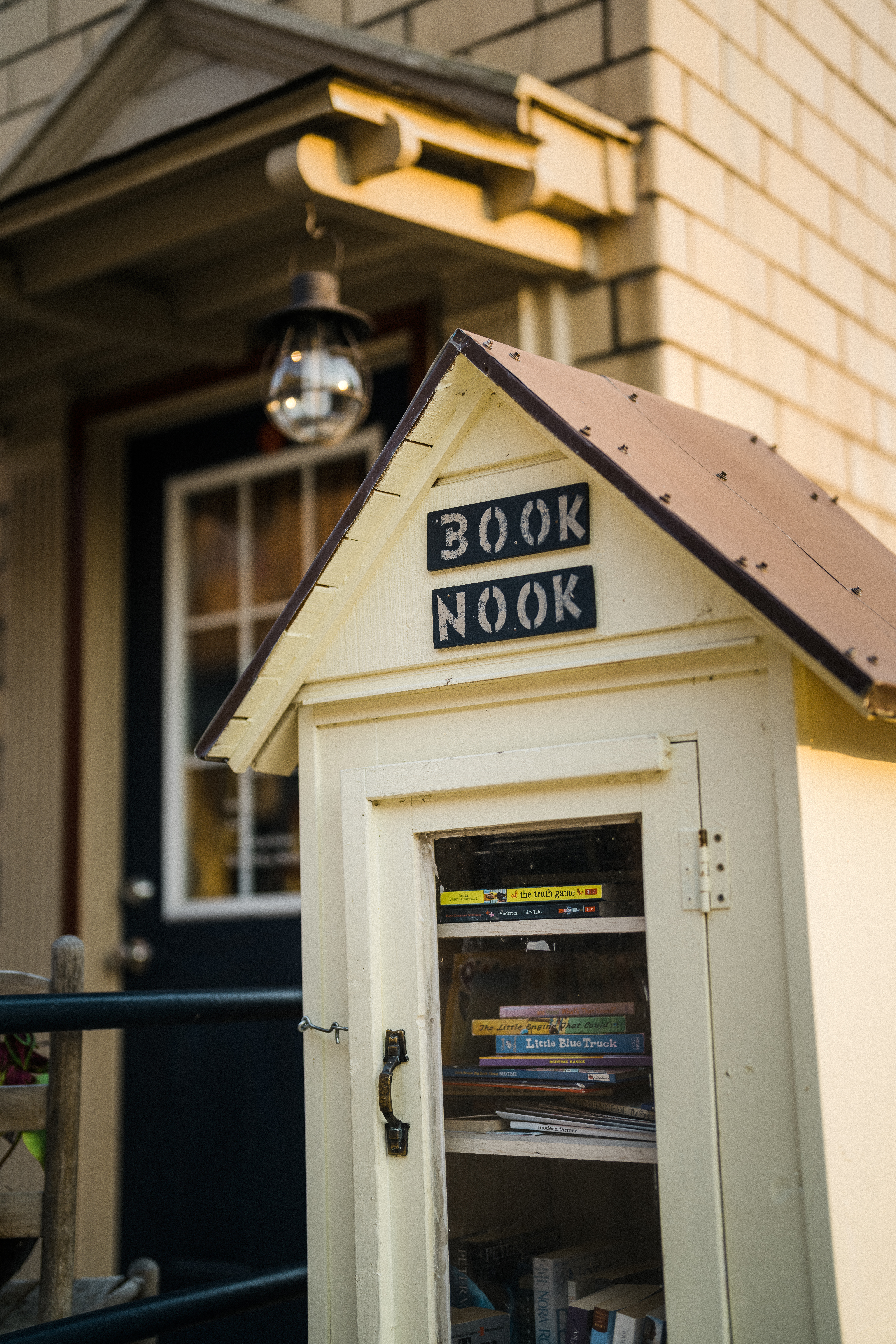
We’re close to the Hocking Hills, which is a huge destination for tourists. They have these incredible rock formations that attract people. We have small rock formations and it’s a much more chill atmosphere.
One of the things we’re trying to do in The Winding Road, which is part of the Shawnee Trail Town Initiative, is to really build our interpretive guiding strategy. We want to become a place that’s known for learning and experiencing a provocative story and recovering landscape, as opposed to zip lines and putt-putt golf courses.
I think if people really invested in the collaborative process it would go a long way in getting people to not be so polarized.
John Winnenberg
We really want to continue building a network of people who care about these things. We want people who have a certain set of stewardship values for the story, the place, and the landscape. It doesn’t have to be a separate organization. We’ve created a collaboration network of organizations that brands themselves around this idea.
Because part of our history here is that outsiders come in with promises they don’t keep or create something wonderful and then it goes away in a year and we fall off the cliff, we’ve tried to make conscious investments from government and private investors in a way that is planned out and owned by local people, instead of just dropped down.”
“We got connected to some people in Asheville, North Carolina who have a pretty strong but simple way of helping people make decisions together. Through that, we’ve learned about and practice coming to agreements through a range of tolerance model. With that, decisions don’t move forward until it’s within everyone’s range of tolerance. That doesn’t mean you get exactly what you want, but it means you have to be able to say, ‘I’m willing to stick with this and it’s within my range of tolerance.’
It’s a lot of going around the table and making sure everyone gets to speak. Everyone has to declare, ‘Okay, I’m good enough with this. I have reservations, but I’m not going to leave the table and get angry because everyone has spoken, made their thoughts known, and we decided together that we could all, at the very least, tolerate it.’
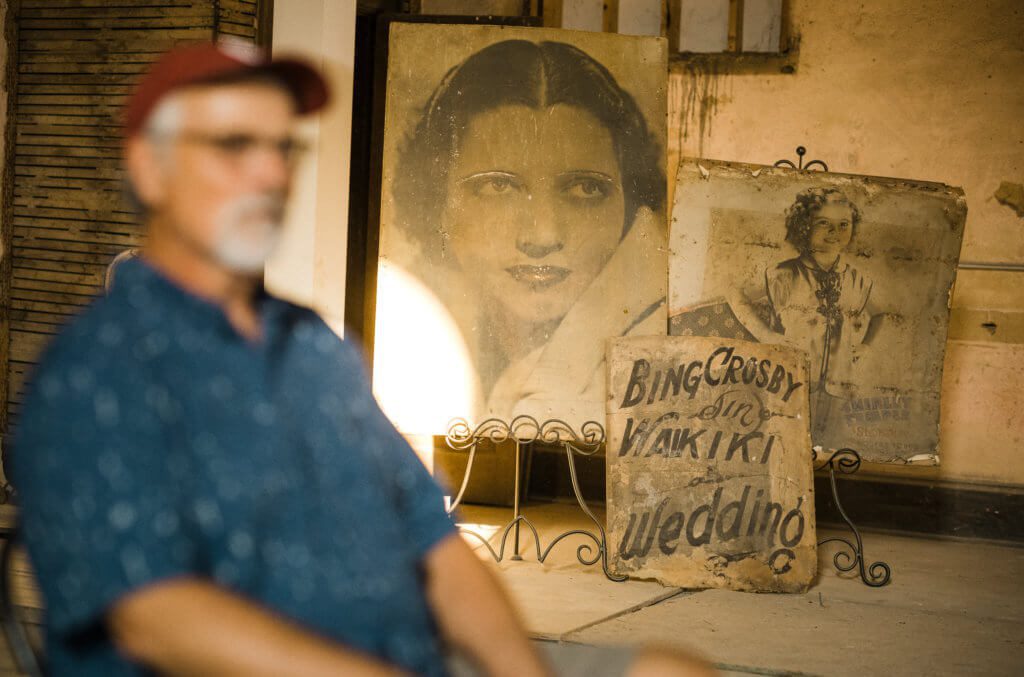
It’s been a really good journey. Growing up, I watched the War on Poverty. I saw the period where a lot of the government programs were somewhat dependency-building and not well thought out.
Building these collaborative networks that are competent, operating, and inclusive of many different players is an empowering way to avoid that. I think the more we go about finding ways to fund these groups, instead of the government trying to do it themselves, is a model that could be one way to deal with all the wicked challenges we have in our society right now.
I’m a big fan of true collaboration in that way and I’m a dreamer, too. I think if people really invested in the collaborative process it would go a long way in getting people to not be so polarized.”
“I think when you neglect certain areas or groups of people for long enough, you get people who don’t feel any control over the place where they live or the circumstances which affect them. They can feel disenfranchised and then people leave those areas in droves.
Especially our young, talented people. They see no value in staying in a place like that. We do a pretty good job in our rural schools of bringing out the best in kids, but the kids with a lot of talent and vision, they don’t stay.
I was kind of an exception. I grew up kind of privileged by local standards. My mom was a schoolteacher and my dad ran the drugstore in one of the little towns and so I lived a much better life than most of my classmates.
I went away to college and thought I’d never come back. But by accident, I did and I fell back in love with it because of the natural assets.
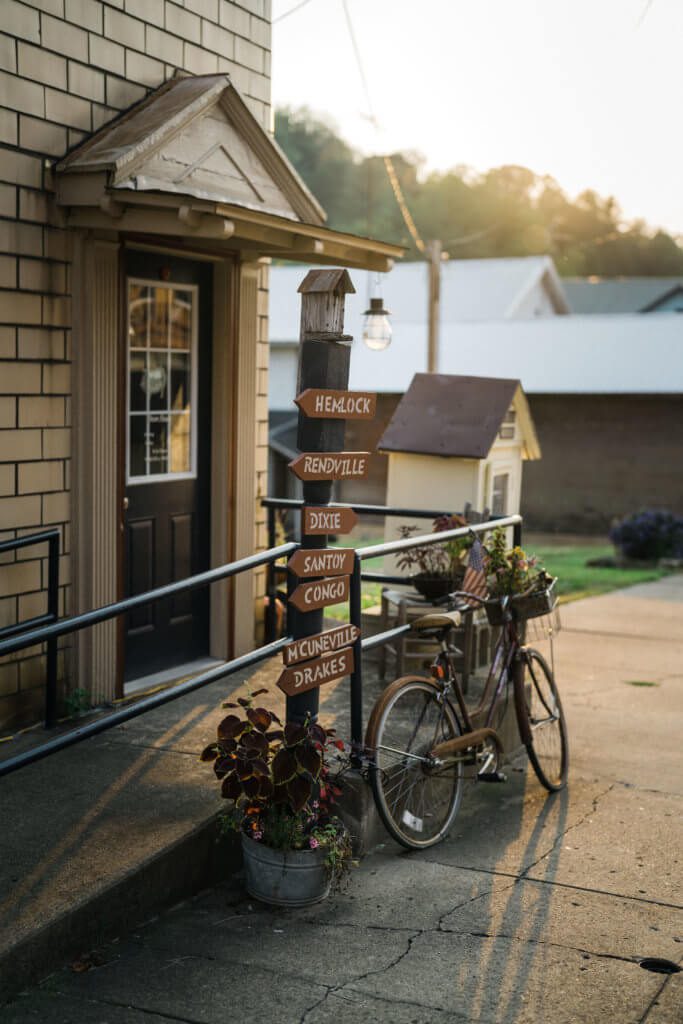
But it can be a pretty barren landscape for kids in rural America sometimes. There are food deserts, or deserts with security or quality of life.
One of the strategies that we’re in the midst of, and one that I care about the most at this stage in my life, is bringing new homesteaders here. That could be long-standing people or newcomers to the region.
We’re trying to find incentives for younger people to relocate here. With technology, and because of COVID in some ways, there’s an element of younger people who are thirsty. They want to be here and are looking for ways to be here.
If society wanted to really start to heal some of these wounds between the haves and the have nots, it might involve investing in the dynamics that allow people to mix together, work on problems together and learn to trust and know each other again.
That’s where I am right now with our Little Cities Council because we were about ready to shut it down. All the elders that previously worked on all of our storytelling, or created the history groups, or helped write the books and held exhibits with artifacts and pictures at Little Cities Day are all very old or are already dead.
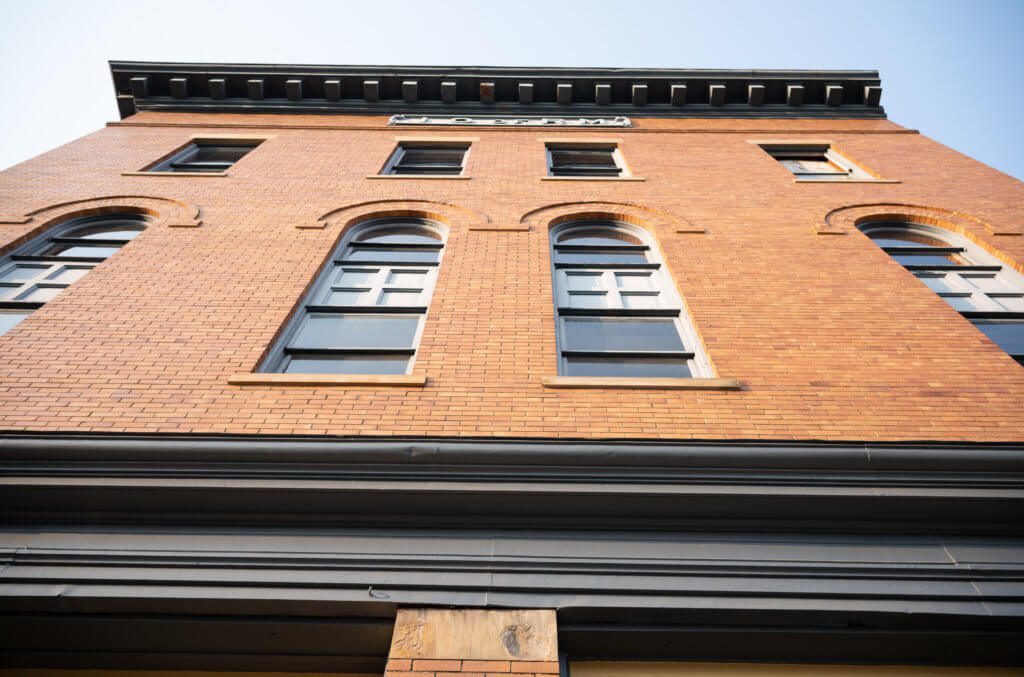
There are still some of us who were younger when this all got started, but not many. We had our 25th anniversary and we put the call out to all of our friends in the region, young and old, about getting involved.
This group of young people came forward and said, ‘We’re not going to let this die.’ and now they’ve taken it on. In the last year, they’re starting to raise more money and they’re taking on new projects. There is also this dynamic of them supporting one another. Rural Action has this AmeriCorps Program that brings in new grads and folks coming out of college. A percentage of them want to stay here because they love the vibe here, so they’re staying and investing.
We need to keep our identities, but also build a more common identity together.
john winnenberg
We’ve got these little seeds planted and I’m always trying to nurture those things. There’s this need for intentional and intergenerational transfer. I think the best of the baby boomers ought to be nurturing and open-minded to the best of the younger generation that’s coming forward.
That’s why we need some tools to bring people together to have those conversations and figure things out together. I want to make space for them, and I also want to understand where I’m getting in the way.
We’re getting more intentional about the process. There’s a growing understanding that we have to find ways to figure out how to work together, especially in rural areas. We can’t afford to have everyone in their own silo, doing the same thing, because there aren’t enough resources for that.
Old paradigms are changing. We are starting to come around to thinking about how we could work together as a collaborative group and join forces. That is crucial, because we’ve got some wicked situations in this world that we’re not going to solve, but we can certainly manage a lot better together.
We need to keep our identities, but also build a more common identity together.”
—John Winnenberg, Sunday Creek Associates
Shawnee, Perry County
#WeAreOhioSE




